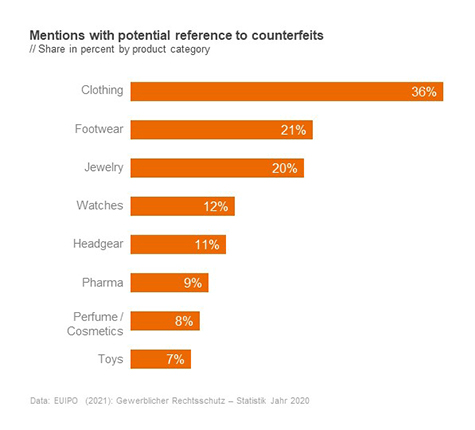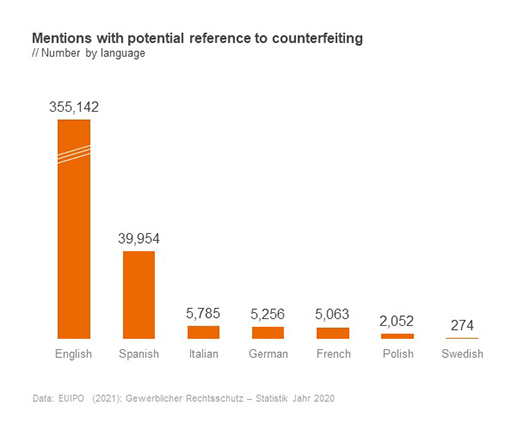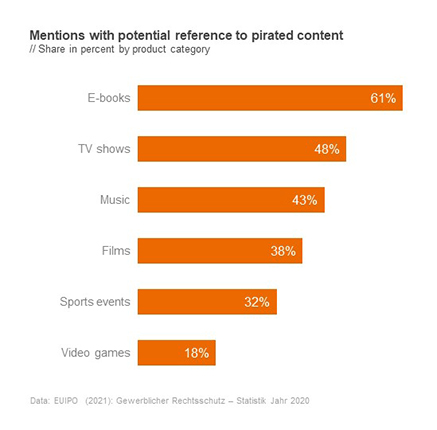Insights into the vast volume and frequency of IP infringements on social media are now available in a new study from the European Union Intellectual Property Office (EUIPO). According to the analysis, around 11 percent of all interactions regarding physical products on social networks are related to potential counterfeit goods; around 35 percent of the interactions analyzed also involved potential pirated content.
Over a period of six months (April to September 2020), experts analyzed several million interactions on the social networks Facebook, Instagram, Reddit, and Twitter. Using data mining, they collected content from users in six European countries: Germany, Spain, France, Italy, Poland, and Sweden. They then analyzed the public content for possible IP infringements of physical products and digital content.
A total of around 3.9 million interactions concerning physical products were examined in the study. Toys were discussed most frequently (around 1.9 million interactions), followed by perfumes and cosmetics (ca. 1.2 million interactions). According to the study, a total of around 11 percent of interactions across all product categories were possibly related to counterfeits. This share was peaked for clothing (36 percent), followed by footwear (21 percent). Looking at toys, around 7 percent of interactions were related to potential counterfeits.

Instagram accounted for the largest share (ca. 67 percent) of all interactions that could be related to potential counterfeits, followed by Twitter (26 percent), and Reddit (7 percent). Facebook represented the smallest share (less than one percent) – however, the report points out that interactions in Facebook groups were not analyzed as they are not public. A study published in 2017 already indicated that suspicious content was shared noticeably often via closed Facebook groups.
The share by product categories of the possible mentions of counterfeits differs significantly in some cases between the individual social media networks. However, for each of the industries analyzed, Instagram had the highest share of all interactions on presumed counterfeits, except for clothing. Counterfeit clothing was discussed most frequently on Twitter. On Instagram, most suspicious mentions involved perfumes and cosmetics (30 percent), footwear (29 percent), and toys (25 percent). On Twitter, most interactions involved possibly counterfeit toys (45 percent), clothing (36 percent), and footwear (13 percent). On Reddit, interactions about possibly counterfeit toys (68 percent) topped the list, as was the case on Facebook, where about half of the interactions were about possibly counterfeit toys.
Almost all possible mentions of counterfeiting took place in English-language content (86 percent), with Spanish, Italian, German, and French following by a wide margin. The respective share was again significantly lower in Polish- and Swedish-language content.

In terms of digital content, around 35 percent of interactions showed a possible link to piracy. According to the analysis, the share was highest for digital content in the form of e‑books (61 percent), TV shows (48 percent), and music (43 percent).

The analysis also looked at the impact of the Covid-19 pandemic, and here showed an increase in mentions of potentially counterfeit medicines as well as clothing. The full study Monitoring and analysing social media in relation to IP infringement can be accessed via the EUIPO website.




